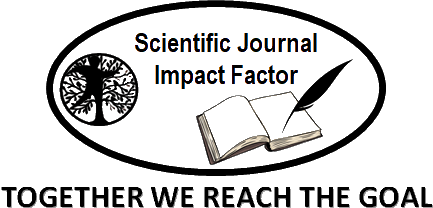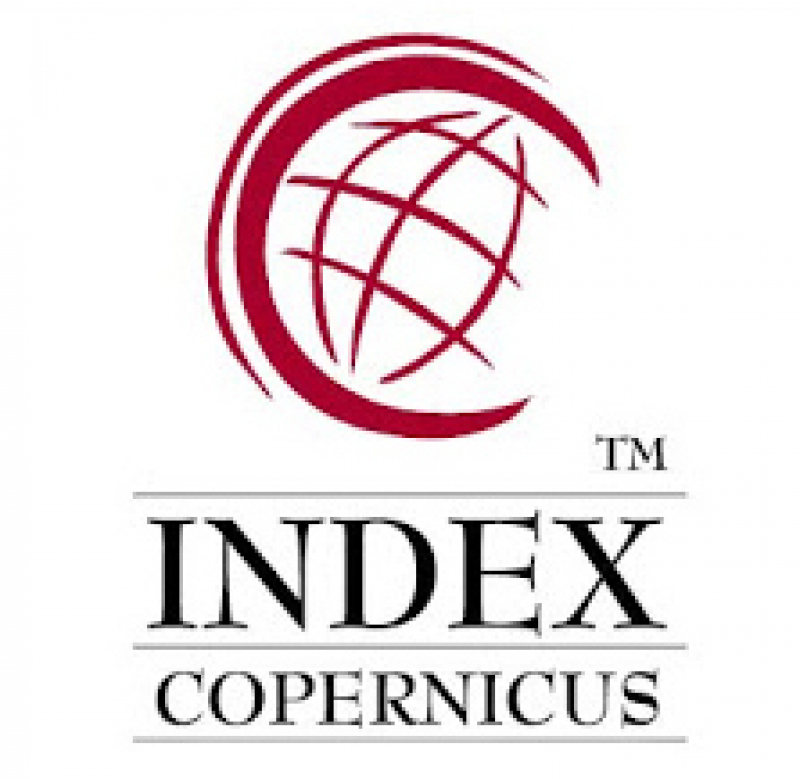Exploring Innovative Approaches in Reducing External Debt: Analyzing Challenges and Effective Strategies
Abstract
Reducing external debt is a critical challenge for many nations striving for economic stability and growth. This abstract explores innovative approaches to address this issue, highlighting the need for comprehensive strategies and international cooperation. The analysis delves into various mechanisms, such as debt restructuring, fiscal consolidation, and the implementation of prudent monetary policies. Emphasizing the role of economic diversification, the paper examines how broadening the economic base can reduce dependency on foreign debt. It also considers the potential of leveraging technology and digital financial solutions to enhance transparency and efficiency in debt management. The challenges associated with reducing external debt are multifaceted, including political instability, lack of institutional capacity, and global economic volatility. By examining case studies of countries that have successfully managed to lower their external debt, the paper identifies best practices and lessons learned. International support and collaboration, including debt relief initiatives and favorable trade agreements, are also discussed as vital components of effective debt reduction strategies. The paper highlights the importance of strengthening domestic financial markets and improving governance structures to create a resilient economic environment. The role of innovative financing instruments, such as green bonds and diaspora bonds, is explored as a means to attract investment and support sustainable development goals. Reducing external debt requires a holistic approach that integrates economic, financial, and technological solutions. By adopting innovative strategies and fostering international cooperation, countries can achieve sustainable debt levels, ensuring long-term economic stability and growth. This analysis provides valuable insights for policymakers, financial institutions, and international organizations committed to addressing the complexities of external debt management.
Keywords
Full Text:
PDFReferences
Turan T, Yanıkkaya H. External debt, growth and investment for developing countries: some evidence for the debt overhang hypothesis. Portuguese Economic Journal. 2021. [HTML]
Prah GJ, Ofori C. External debt and foreign investment: An empirical analysis on the economy of Ghana. Eurasian Journal of Economics and Finance. 2022;10(2):54-67. eurasianpublications.com
Azolibe CB. Determinants of external indebtedness in heavily indebted poor countries: what macroeconomic and socio-economic factors matter?. The American Economist. 2021. [HTML]
Uslu H. Relationship between economic growth external debt: Application to Turkey. MANAS Sosyal Araştırmalar Dergisi. 2021. dergipark.org.tr
Moran TH, Grieco JM, Encarnation DJ, Wells LT, Cable V, Mukherjee B, Glover DJ, Oman CP, Guisinger S, Goldsbrough DJ. Foreign investment in low-income developing countries. InInvesting in Development 2021 Dec 24 (pp. 87-111). Routledge. [HTML]
Li R, Guo J, Wang Q. Impact of foreign aid on the ecological sustainability of sub-Saharan African countries. Environmental Impact Assessment Review. 2022. [HTML]
Navarro-Ortiz J, Sapena J. Is external debt sustainable? A probabilistic approach. Economic Modelling. 2020. [HTML]
Ogbonna O, Ihemeje I, Obioma O, Hanson H, Amadi A. Impact of external debt management on economic growth of Nigeria. Journal la bisecoman. 2021 Jun 2;2(2):25-41. newinera.com
Yusuf A, Mohd S. The impact of government debt on economic growth in Nigeria. Cogent Economics & Finance. 2021. tandfonline.com
Wanyama HN, Byaruhanga J, Ngala C. Effect of External Debt on Real Estate Investment in Kenya. Journal of Finance and Economics. 2020 Aug 11;8(4):183-9. researchgate.net
Lui K, Magnusson T. Legal Aspects of External Debt and Lending. SUSTAINABLE FINANCING OF DEVELOPMENT AND INFRASTRUCTURE. 2022:265. themcdf.org
Manasseh CO, Abada FC, Okiche EL, Okanya O, Nwakoby IC, Offu P, Ogbuagu AR, Okafor CO, Obidike PC, Nwonye NG. External debt and economic growth in Sub-Saharan Africa: Does governance matter?. Plos one. 2022 Mar 4;17(3):e0264082. plos.org
Zehri C. Capital controls to manage foreign exchange reserves and foreign debts. Zbornik Radova Ekonomskog Fakulteta U Rijeci (Faculty of Economics and Business Rijeka). 2020 Jun 30;38(1):271-94. uniri.hr
Nurjanah R, Mustika C. The influence of imports, foreign exchange reserves, external debt, and interest rates on the currency exchange rates against the United States Dollar in Southeast Asia Countries. Jurnal Perspektif Pembiayaan dan Pembangunan Daerah. 2021 Oct 31;9(4):365-74. unja.ac.id
Ayunku PE, Markjackson D. Impact of external debt on Nigeria’s foreign reserve portfolios. Asian Journal of Economics and Empirical Research. 2020;7(1):1-7. academia.edu
Akdogan IU. Understanding the dynamics of foreign reserve management: The central bank intervention policy and the exchange rate fundamentals. International Economics. 2020. ucl.ac.uk
Ugwuanyi GO, Ugwuanyi W, Efanga UO, Agbaeze CC. External debt management and economic development in Nigeria. REVISTA GEINTEC-GESTAO INOVACAO E TECNOLOGIAS. 2021 Sep 1;11(4):5027-44. revistageintec.net
Ohiomu S. External debt and economic growth nexus: Empirical evidence from Nigeria. The American Economist. 2020. [HTML]
Fonchamnyo DC, Dinga GD, Ngum VC. Revisiting the nexus between domestic investment, foreign direct investment and external debt in SSA countries: PMG‐ARDL approach. African Development Review. 2021 Sep;33(3):479-91. [HTML]
Petrushenko YM, Korneyev M, Nebaba N, Banchuk-Petrosova O, Bohorodytska A. Assessment of the external debt impact on a country’s economic development indicators: Evidence from Ukraine. sumdu.edu.ua
de la Cruz Prego F. The Influence of Foreign Aid in Bolivia: Geopolitics of Aid-Commodity Substitution in Historical Perspective. Journal of Global South Studies. 2021. academia.edu
Leiva D. BRI and railways in Latin America: how important are domestic politics?. Asian Education and Development Studies. 2021. [HTML]
Alam NAE, Dalla-Costa AJ. Foreign Direct Investment and Multinationals in Brazil (1860-1913). América Latina en la historia económica. 2022. scielo.org.mx
Peres-Cajías JA. From west to east: Bolivian regional GDPs since the 1950s. A story of natural resources and infrastructure. Time and Space: Latin American Regional Development in Historical Perspective. 2020:97-129. econstor.eu
Urdinez F. The accession of Latin American countries to the Asian Infrastructure Investment Bank: lessons from Brazil and Chile. Asian Education and Development Studies. 2021. researchgate.net
Slobodian Q. World maps for the debt paradigm: Risk ranking the poorer nations in the 1970s. Critical Historical Studies. 2021. [HTML]
Altamura CE, Zendejas JF. Politics, international banking, and the debt crisis of 1982. Business History Review. 2020. unige.ch
Jensen L. Avoiding 'too little too late'on international debt relief. Development Futures Series Working Paper. 2022. undp.org
Jensen L. Thematic bonds and how to deliver more sustainable finance in developing economies. 2024. undp.org
d Chamon MM, Klok E, Thakoor MVV, Zettelmeyer MJ. Debt-for-climate swaps: analysis, design, and implementation. 2022. imf.org
ADUMEIN GW, OGOUN S. External debt management and financial deepening: a causal analysis. International Journal of Economics, Commence and Management. 2020;8(2):9-19. researchgate.net
Nwakoby IC, Ezeaku HC. Effects of concessional debt on economic development: a multilateral and bilateral perspective on the West African monetary zone. European Journal of Economic and Financial Research. 2021 Jul 6;5(2). oapub.org
Mhlanga D. Industry 4.0 in finance: the impact of artificial intelligence (ai) on digital financial inclusion. International Journal of Financial Studies. 2020. mdpi.com
Wood RE. From Marshall Plan to debt crisis: Foreign aid and development choices in the world economy. 2024. [HTML]
Achenui N. The US Marshall Plan and the Post-World War II Reconstruction of Europe, 1947-1970: Economic and Diplomatic Study. American Journal of International Relations. 2021. ajpojournals.org
DOI: http://dx.doi.org/10.18415/ijmmu.v12i4.6767
Refbacks
- There are currently no refbacks.
Copyright (c) 2025 International Journal of Multicultural and Multireligious Understanding

This work is licensed under a Creative Commons Attribution-NonCommercial-NoDerivatives 4.0 International License.
https://ijmmu.com
editor@ijmmu.com
facebook.com/ijmmu
Copyright © 2014-2018 IJMMU. All rights reserved.



































